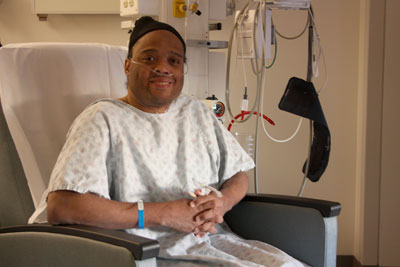BWH Patient Receives First New Heart Defibrillator in New England

Anthony Andrews |
Imagine a device that could potentially save your life when you had no other options.
For Anthony Andrews, 36, of Gloucester, this scenario is now a reality. In November, Andrews became the first person in New England to receive a new type of heart defibrillator-an alternative for patients who are not eligible for a traditional ICD-approved by the U.S. Food and Drug Administration merely two months ago.
The cardiac device, called a subcutaneous implantable defibrillator (S-ICD), is implanted under the skin and delivers an electric shock to the heart to treat an abnormally rapid heartbeat. Unlike a traditional ICD, which involves one or more insulated wires that run from the device through a patient's vein to the lower chamber of the heart, the S-ICD does not require access to a patient's heart or blood vessels.
Instead, the insulated wire, or lead, is placed under the skin, which is especially important for patients like Andrews, who are not eligible to receive a traditional ICD because of complicated vascular structure or scarring, or other health issues. Andrews has a complex family history of heart disease, as well as vascular issues and renal failure.
"This device was created for people like me," said Andrews, who has received care at BWH since he was born. "I am also a dialysis patient, and the device frees up access to my arms for dialysis treatment. The device will give me a chance at a longer life."
In October, Andrews learned from his cardiologist, Bruce Koplan, MD, that he was eligible for the new device. Koplan performed the successful surgery last week, and Andrews was mobile later the same day and released the following morning. The device, manufactured by Boston Scientific, will not interfere with Andrews' dialysis treatment, and unlike a traditional ICD, there is no risk of infection. Two additional S-ICD surgeries were performed at BWH the same day.
"For a sub-set of our patients who have life-threatening arrhythmias but are not eligible for a traditional ICD, this has the potential to save their life," said Laurence Epstein, MD, chief of the cardiac arrhythmia service at BWH. He believes that 10 to 15 percent of his patient population will benefit from the new device.